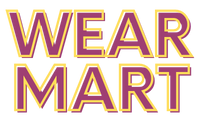Getting the right machinery can really move your business forward, but financing these big purchases? That’s where a lot of folks trip up. Equipment financing mistakes can cost thousands of dollars and create unnecessary financial stress that could have been easily avoided.
The machinery financing process isn’t just about chasing the lowest monthly payment. Smart owners look at their actual needs, compare different options, and try to get a clear sense of what they’re signing up for. Still, it’s easy to rush and skip the research.
From hidden fees to missing out on tax benefits, these mistakes can hit your cash flow and slow down future growth.
Not Assessing Business Needs and Financial Health
A lot of business owners dive into buying equipment without really thinking through what they actually need or where their finances stand. That’s how you end up overspending or locked into payments you can’t handle.
Understanding Machinery Requirements
Some folks see what their competitors have and think, “I’ll take that too.” But that’s a quick way to waste money on features you’ll never use. The website https://excavatorfinanceoz.com.au talks about this and the common pitfalls with excavator purchases.
Start with a needs analysis. List out what you actually need the machine to do. Figure out the minimum specs you really require.
A few things to consider:
- How much do you actually need to produce?
- What’s your workspace like?
- Any special power or utility needs?
- Will your team need extra training?
Heavy-duty machines last longer but cost more upfront. Lighter ones are cheaper but might break down or become obsolete faster.
Take a look at what similar businesses use and how long their equipment lasts. Maintenance costs and tech upgrades can sneak up on you, so keep those in mind.
Evaluating Cash Flow Impact
Equipment payments can stick around for years, so you’ve got to look at more than just the monthly bill.
Add up everything:
- Down payment
- Loan or lease payments
- Insurance, maintenance, training
Look at your cash flow for the next year, not just the next month. Will you be able to cover the payments when business slows down?
Make a simple table with your income and expenses, factoring in the new equipment. Sometimes, people expect new machines to boost revenue instantly, but that rarely happens. There’s usually a lag before you see the benefits.
Aligning With Business Growth Plans
Your equipment choices should fit where your business is headed. Buy too much and you waste money. Buy too little and you’ll hold yourself back.
Check your business plan for growth projections. If you expect to double revenue in two years, plan accordingly.
Fast-growing businesses might prefer shorter loan terms or leasing, so they can upgrade as their needs change.
Think about:
- How much demand might increase
- Whether you’re entering new markets
- Seasonal ups and downs
- Plans to hire more staff
Leasing can be a good move during rapid growth since it lets you swap out equipment more easily.
Failing to Compare Financing Options
Too many business owners grab the first financing deal they see without shopping around. Lenders offer all kinds of rates, terms, and structures, and the differences can really add up.
Exploring Loans, Leasing, and Lines of Credit
You’ve got three main ways to finance machinery, and each one fits different goals.
Equipment loans mean you own the machinery right away. You get a lump sum, pay it back with interest over a set period.
Equipment leasing lets you use the machine without owning it. Lease payments are usually lower. When the lease ends, you can return, buy, or upgrade the equipment.
Lines of credit give you flexible access to funds. You only pay interest on what you actually use. This is handy if your cash flow swings up and down.
| Financing Type | Ownership | Monthly Cost | Tax Benefits |
| Equipment Loan | Immediate | Higher | Depreciation |
| Equipment Leasing | End of term | Lower | Full deduction |
| Line of Credit | When purchased | Variable | Depends on use |
Differences Between Banks and Equipment Financing Companies
Banks and equipment finance companies aren’t the same.
Banks usually offer lower rates if your credit’s solid, but they want a lot of paperwork and can take weeks to approve.
Equipment financing companies know the industry better and move faster—sometimes in a day or two. They’re often more flexible if your credit isn’t perfect.
Leasing companies deal directly with machinery dealers and sometimes run special promotions.
Equipment finance companies often care more about the equipment’s value and your cash flow than just your credit score.
Flexible Repayment and Loan Terms
Repayment terms vary a lot, and the wrong structure can mess with your cash flow.
Fixed payments make budgeting easier. Banks usually prefer these.
Seasonal payments go up and down with your business cycles. Great for industries like agriculture or tourism.
Variable rates start lower, but they can rise. There’s some risk if rates jump.
Step-up payments start low and climb, which can help new businesses. Step-down payments do the opposite.
Some lenders let you stretch payments from 12 to 84 months. Longer terms mean smaller payments but more interest overall.
Overlooking the True Cost of Financing
If you only look at the monthly payment, you’ll miss a lot of sneaky costs. Knowing all the expenses upfront helps you avoid nasty surprises.
Interest Rates and Hidden Fees
Interest rates are just the beginning. Lenders love to tack on fees.
Origination fees can run from 1% to 5%. On a $100,000 deal, that’s $1,000 to $5,000 right there.
Other common fees:
- Documentation ($200-$500)
- Processing ($300-$1,000)
- Application ($100-$750)
- Title transfer ($50-$200)
Ask for a full fee schedule before you sign anything. Some lenders roll fees into the loan, so you end up paying interest on them too.
Always check the APR—that’s the real cost, including most fees.
Calculating Total Cost of Ownership
There’s more to the price than just financing. You need to tally up everything the machine will cost over its life.
Don’t forget:
- Purchase and financing
- Installation and setup
- Training operators
- Insurance
- Depreciation for taxes
A surprising number of small businesses underestimate these costs by 20% or more. That can really hurt down the line.
Make a spreadsheet with every one-time and ongoing expense you can think of.
Think about how the machinery will actually affect productivity and revenue. Sometimes, spending more upfront saves you money later through less downtime or higher output.
Maintenance and Operating Costs
Maintenance and daily operating costs can add up to as much—or more—than the initial purchase.
Maintenance includes:
- Scheduled service
- Replacement parts
- Repair labor
- Emergency fixes
Operating costs are things like fuel, electricity, or consumables. Some heavy machines burn through hundreds of dollars a month in energy.
New equipment might come with a warranty, but once that’s up, costs can spike.
Talk to other businesses using similar equipment to get a sense of real-world expenses.
It’s smart to set aside 5% to 15% of the equipment’s value each year for upkeep. That way, you’re not caught off guard.
Understanding Balloon Payments and Prepayment Penalties
Balloon payments can hit hard if you’re not ready. These big lump sums at the end of a loan catch a lot of owners off guard.
With a balloon payment, you pay less each month but owe a lot at the end. For example, you might pay $800 a month, then suddenly owe $35,000 when the loan ends. You’ll need a plan for that—either saving up or refinancing.
Prepayment penalties are another gotcha. Pay off your loan early and you might owe 2% to 6% of what’s left.
Some lenders let you prepay after a certain period without penalty. Others have penalties that shrink over time.
Negotiate these terms before you sign. If you can pay off early when cash flow improves, you’ll save on interest.
Read every loan document closely. Knowing what you’re agreeing to saves headaches later.
Neglecting Credit, Tax Benefits, and Professional Advice
Business owners often miss three ways to save big: keeping their credit strong for better loan deals, using tax breaks, and getting advice from people who know the financing world inside out.
Impact of Credit Score on Financing
Your credit score matters—a lot. Lenders look at it to set your rates, loan amount, and terms.
Good scores (720+) can get you:
- Rates 2-4% lower
- Bigger loans
- Flexible repayment
- Smaller down payments
Bad scores (below 600) might mean higher rates or flat-out rejection. Check your credit reports for mistakes before you apply.
Build your business credit by paying suppliers and lenders on time. Keep business and personal credit separate if you can.
Some lenders care more about your business’s cash flow than your personal score, but expect to pay higher rates if your credit’s weak.
Utilizing Tax Benefits and Deductions
Machinery purchases come with some real tax perks, but a lot of owners don’t take full advantage.
Section 179 deduction lets you write off the full equipment cost in year one—up to $1,160,000 for 2025.
Bonus depreciation allows a 100% write-off in the purchase year, often for both new and used gear.
You can usually deduct loan interest as a business expense, which lowers your effective rate.
Lease payments often qualify as full deductions, too—operating leases let you write off the whole monthly payment.
Talk to a tax professional to figure out the best approach for your situation. Sometimes, a little expert advice makes a huge difference.
Importance of Financial Advisors and Expert Guidance
Financial experts step in with the kind of guidance business owners just can’t get on their own. Their advice can steer you clear of expensive missteps and point you toward smarter financing options.
Financial advisors help with:
- Weighing lease versus purchase choices
- Looking at cash flow effects
- Structuring deals to get the best tax advantages
- Bargaining for better lender terms
Equipment financing specialists know the ins and outs of industry lending programs and manufacturer deals. They’ll often land better rates than what you’d get if you tried to go it alone.
Accountants make sure your financing choices fit your tax plan and your business goals. They’ll break down the real cost of each option—including those tax twists that can make a big difference.
Banks and credit unions sometimes offer relationship-based financing you just won’t find online. If you build a connection with your local bank, you might get better terms and quicker approvals.
If you’re dealing with a complicated purchase—maybe multiple machines, or buying from overseas—having a pro on your side really matters.
Want to know about “Building a Stylish Yet Functional Wardrobe for Fitness Professionals” Check out our “Blog” category.

